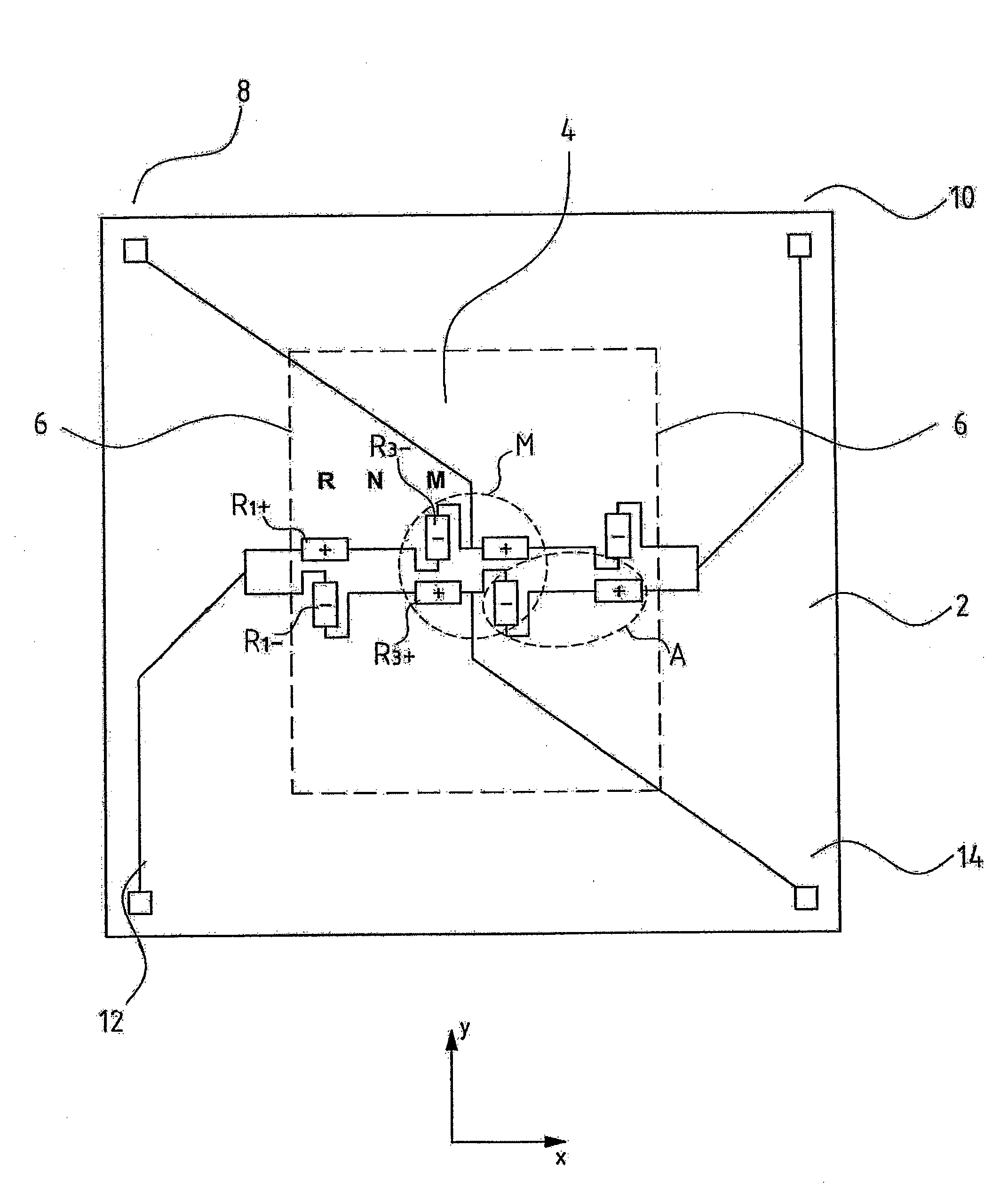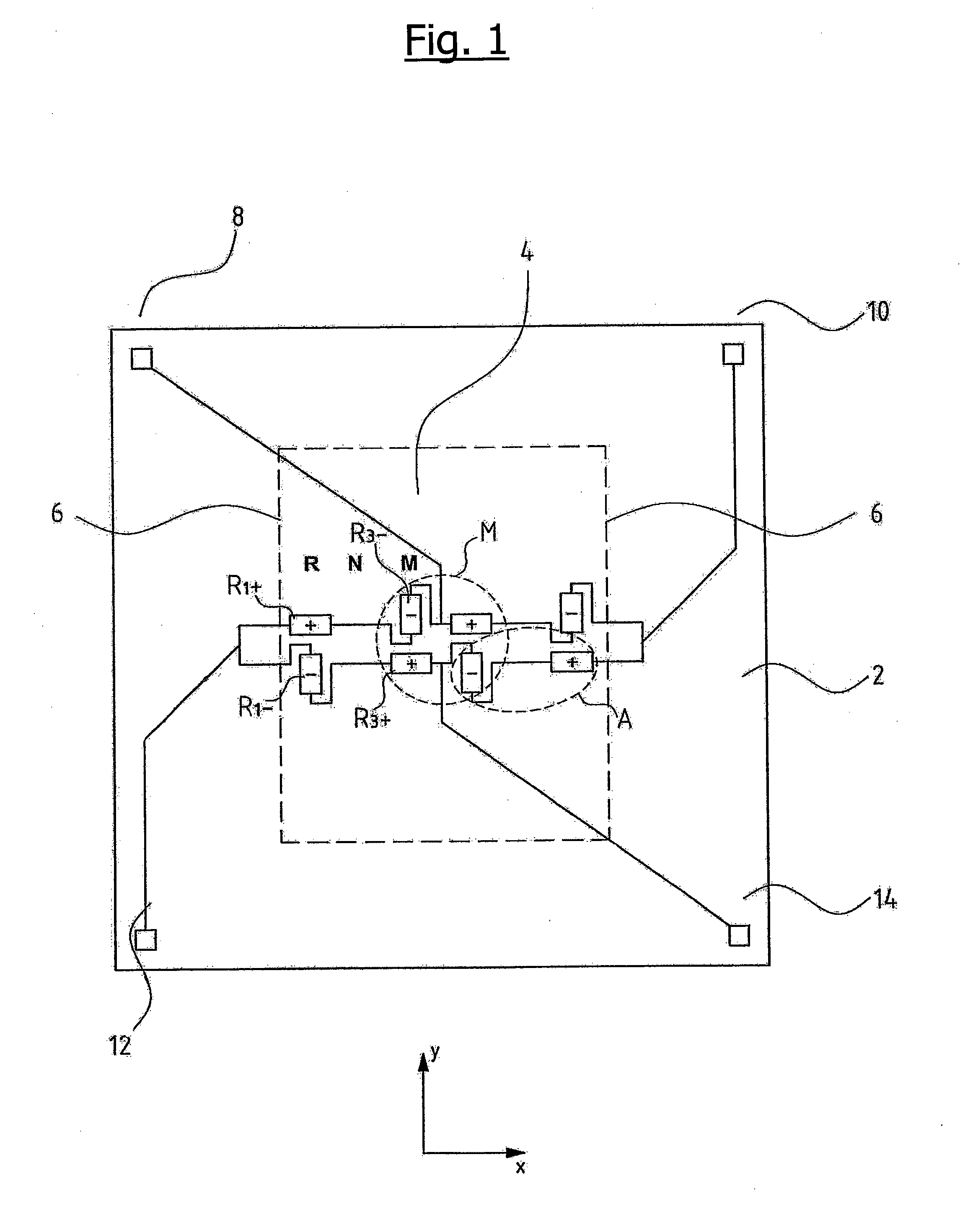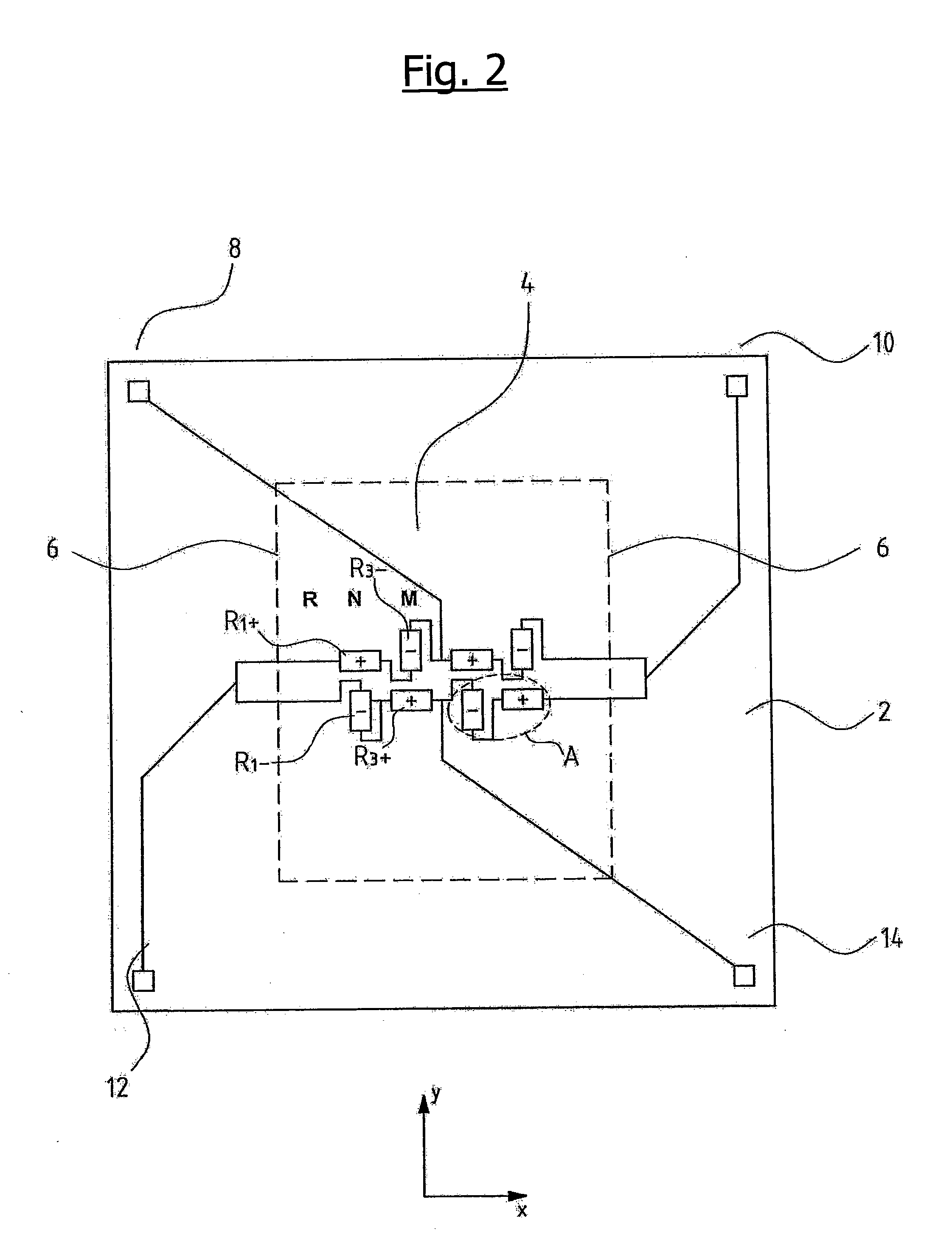Pressure sensor
a technology of pressure sensor and pressure sensor, which is applied in the direction of fluid pressure measurement by electric/magnetic elements, measurement devices, instruments, etc., can solve problems such as adulteration of measurement, and achieve the effect of different deformation behaviour
- Summary
- Abstract
- Description
- Claims
- Application Information
AI Technical Summary
Benefits of technology
Problems solved by technology
Method used
Image
Examples
Embodiment Construction
[0042]The pressure sensor according to the invention explained by way of the figures comprises a carrier or a substrate 2 of a semiconductor material, in whose middle region a rectangular membrane 4 is formed as one piece with the carrier 2 by way of thinning. The membrane is designed such that in the direction of the axis y, it has a greater edge length than in the direction of the axis x. The membrane in a known manner may be impinged from both surfaces with a pressure, in order to be able to determine the differential pressure between the two pressures prevailing at the opposite surfaces of the membrane, on account of the deflection of the membrane. For this, eight measurement elements in the form of measurement resistances are arranged on the membrane. With regard to the embodiment examples according to FIG. 1 to 3, the measurement resistances are formed by way of doping the semiconductor material as piezoresistive elements directly in the membrane surface. Four measurement resi...
PUM
| Property | Measurement | Unit |
|---|---|---|
| pressure | aaaaa | aaaaa |
| resistances | aaaaa | aaaaa |
| compensation resistances | aaaaa | aaaaa |
Abstract
Description
Claims
Application Information
 Login to View More
Login to View More - R&D
- Intellectual Property
- Life Sciences
- Materials
- Tech Scout
- Unparalleled Data Quality
- Higher Quality Content
- 60% Fewer Hallucinations
Browse by: Latest US Patents, China's latest patents, Technical Efficacy Thesaurus, Application Domain, Technology Topic, Popular Technical Reports.
© 2025 PatSnap. All rights reserved.Legal|Privacy policy|Modern Slavery Act Transparency Statement|Sitemap|About US| Contact US: help@patsnap.com



